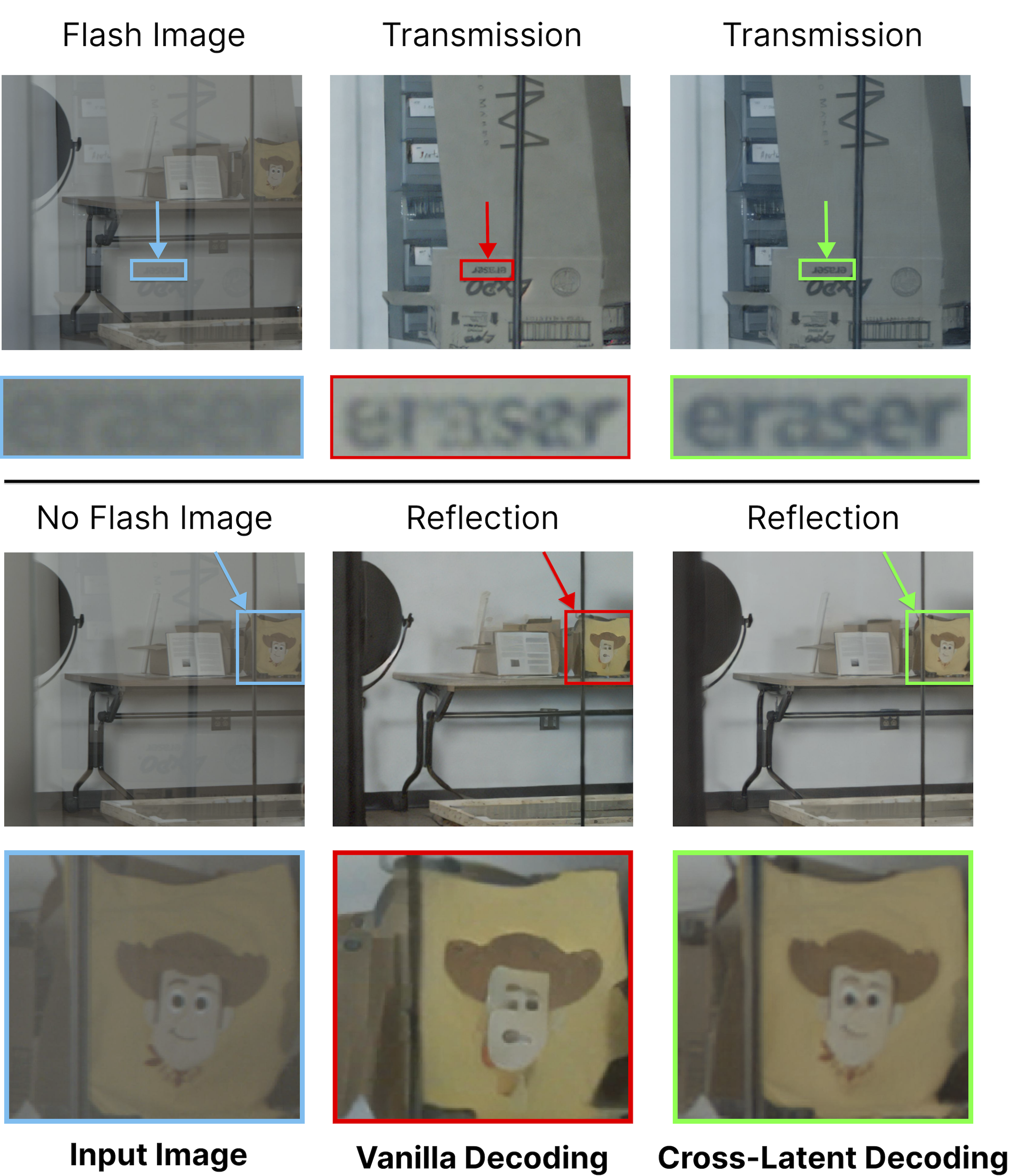
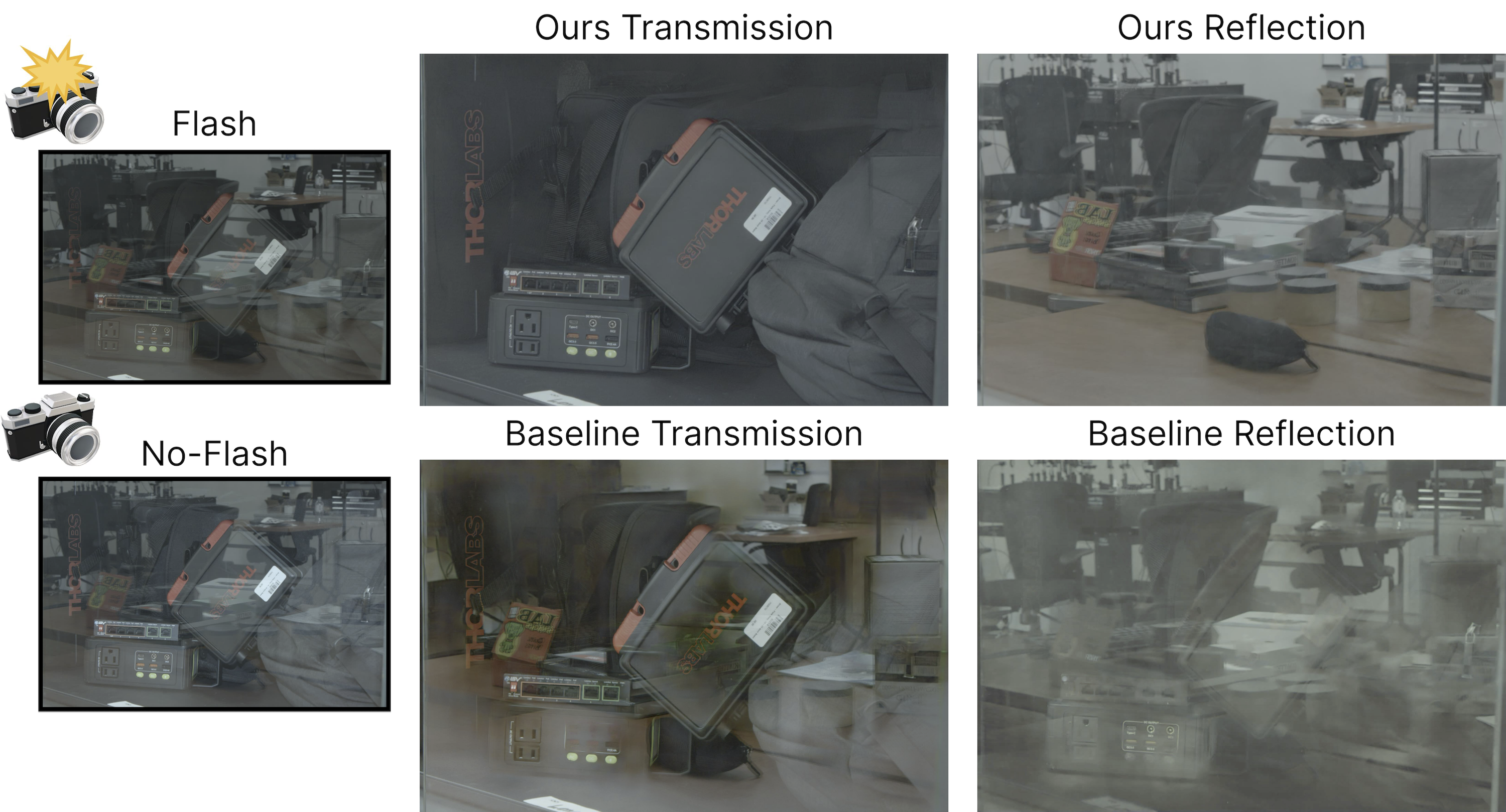
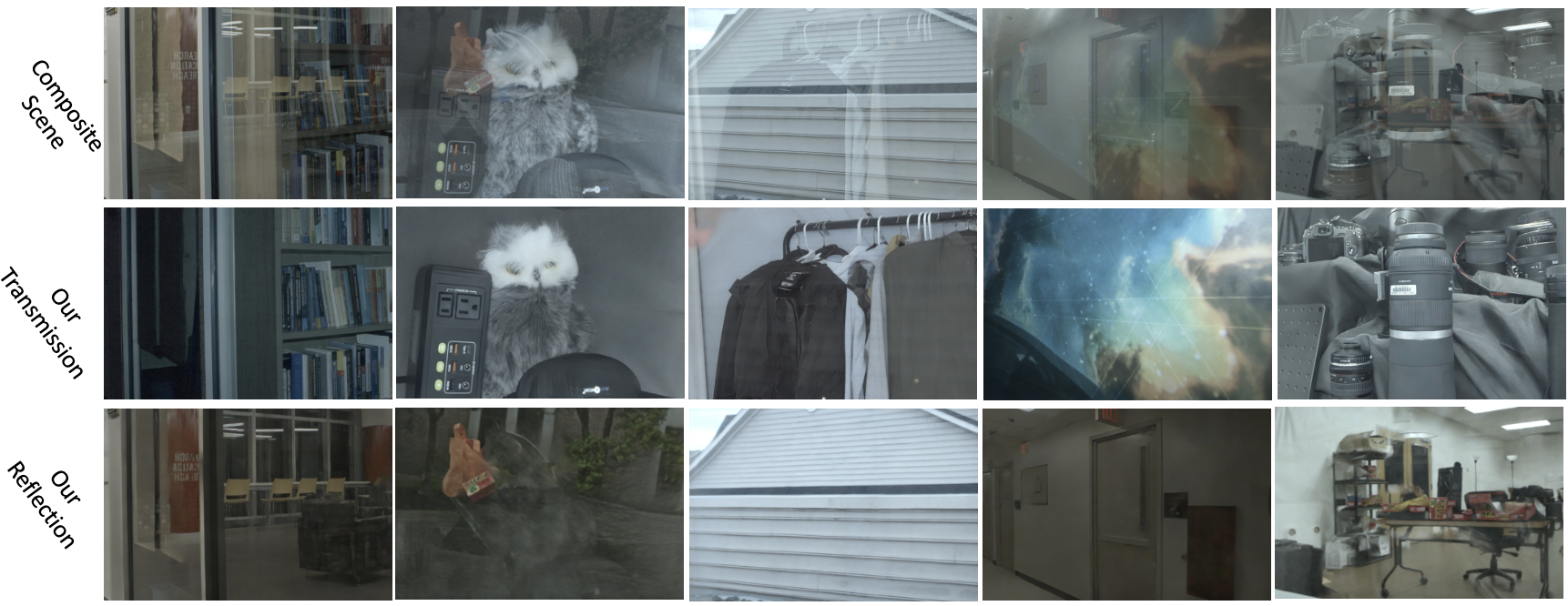



Flash/No-Flash For Reflection Removal. Single-view (2D) Reflection separation is a highly under-determined problem. Traditional approaches work by simply capturing paired flash and no-flash images: their difference will be a reflection-free image. Such pairs must be strictly aligned. Even tiny vibrations like pressing the shutter button produce artifacts, even when using tripod. Our approach performs robust 2D reflection separation without paired flash/no-flash measurements.

Comparing to software-only methods and flash-based ones, we present a best-of-both-worlds approach that gradually removes reflections against misaligned flash/no-flash pairs in the latent space with diffusion.

Flash-Split consists of two stages. Stage 1 Latent Diffusion Separation and Stage 2 Cross-Latent Decoding.
Stage 1 Latent Diffusion Separation: the core idea here is to perform flash-informed reflection separation iteratively in a low-dimensional latent space. The dual-branch latent diffusion U-Net with cross-attention takes in a latent pair of flash/no-flash images and gradually separates the composite scene into reflection and transmission latent images.
Stage 2 Cross-Latent Decoding: to avoid hallucinations in the reconstructed image, we use the input image as a guide to condition the decoding process of the separated latents predicted from our Stage 1 latent diffusion process.

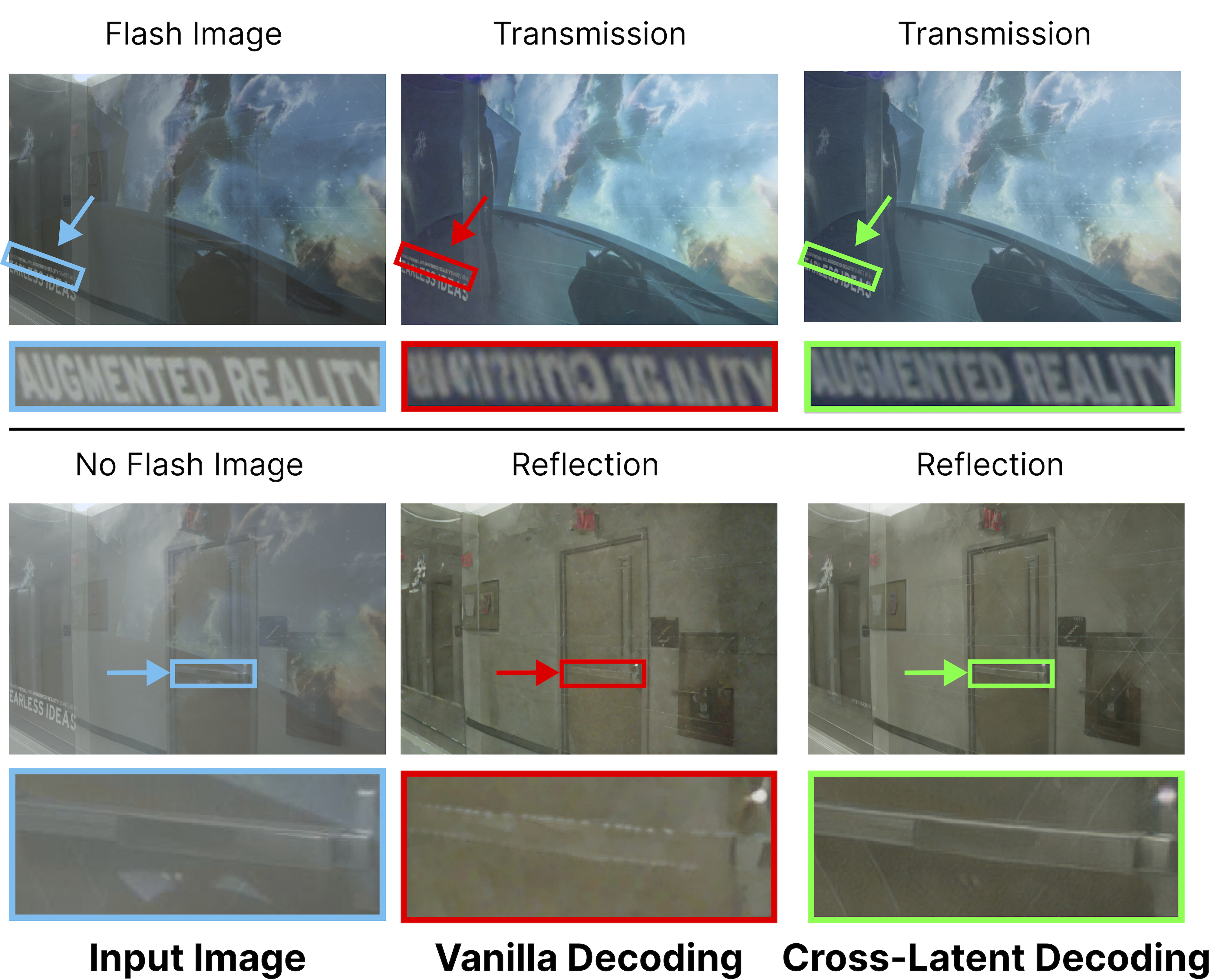
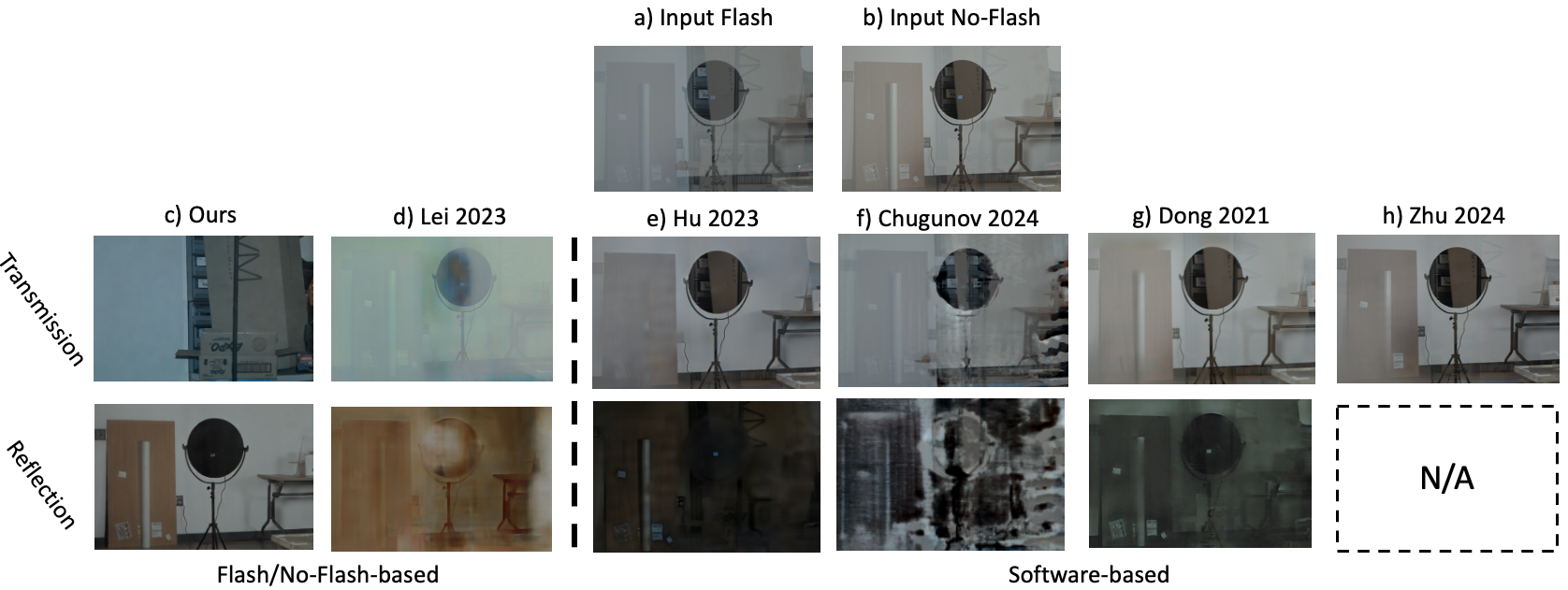

@inproceedings{wang2025flash,
title={Flash-Split: 2D Reflection Removal with Flash Cues and Latent Diffusion Separation},
author={Wang, Tianfu and Xie, Mingyang and Cai, Haoming and Shah, Sachin and Metzler, Christopher A},
booktitle={CVPR},
year={2025}
}